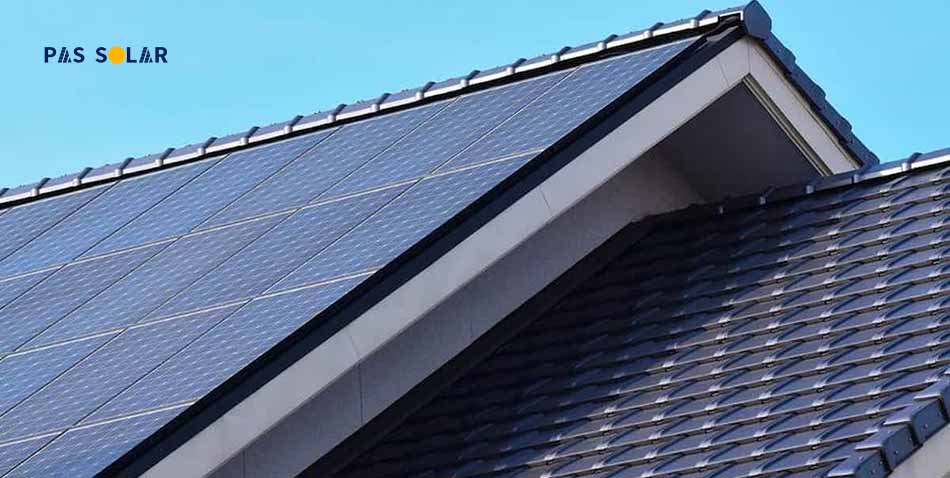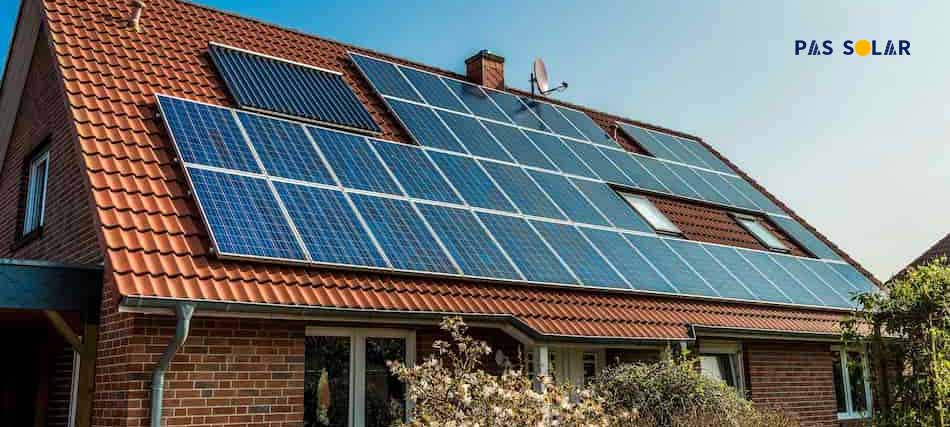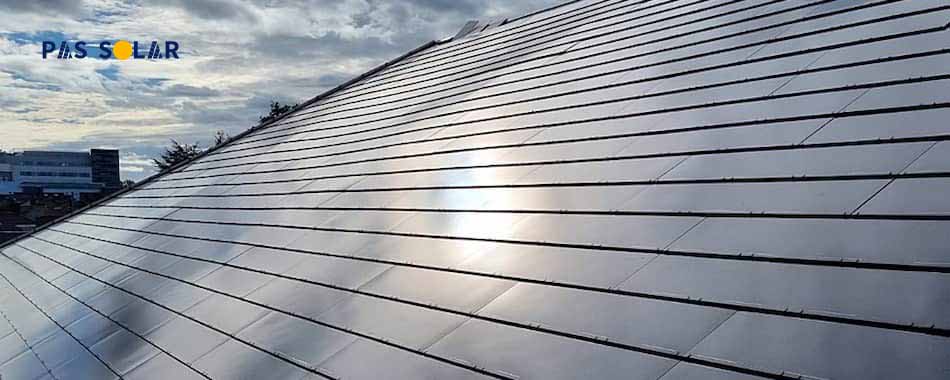Solar power is one of the most widely used alternative energy sources because it not only helps minimize reliance on fossil fuels, but also reduces the overall carbon footprint. In this article, we’re going to compare solar tiles vs panels to help you find out which one is the right option for you. Now solar energy is readily available in Dubai and the price is becoming more affordable.
The variety of types of solar energy products for residential homes is so vast that it can be overwhelming for families to choose between the offerings, for instance, an average person cannot compare solar tiles vs panels. Both solar shingles and solar panels can help you save the planet and save some money, but here are the main differences that may make you prefer one over the other.
What are solar panels?
A single solar panel consists of an array of many photovoltaic cells arranged on a rectangular plate. Multiple solar panels must be connected and positioned to generate electrical power for residential and commercial buildings to ensure maximum sun exposure. Solar panels generate a direct current of electricity that is transformed and stored in solar batteries for later use.
Solar panels mounted to the top of the roof of your home, garage, or outdoor patio using tight-fitting mounting brackets. Generally, there is a gap between the panels and the ceiling. Now you know about solar panels and next, you’re going to learn about solar tiles, which are necessary to know for comparing solar tiles vs panels.
What are solar tiles?
Solar shingles are also known as solar tiles. Comparing the solar tiles vs solar panels, they look similar to traditional roofing materials or asphalt shingles. In addition to protecting the roof, solar shingles are also capable of generating electricity in a similar way to conventional solar panel in Dubai.
Solar tiles are like mini solar panels that use the same photovoltaic effect to generate electricity from sunlight, but are much smaller. They are installed as part of the ceiling rather than as a separate component mounted on the ceiling. Solar shingles can be installed as a total roof restoration or replacement.
Solar tiles vs panels: Key Differences
Solar shingles or solar panels share the same principles. They capture sunlight and turn that energy into electrical current for a home or office. However, the notable differences have less to do with technology than with practicality:
Solar shingles vs solar panels cost
While comparing solar tiles vs panels in terms of cost, we need to mention that solar panels are less expensive than solar shingles. This is why. First, tiles are a novel technology, and second, the installation process is more complicated. So traditional solar panels have an economic advantage for people who already have a well-functioning roof.
There are many solar providers and installation companies to choose from, increasing competition and lowering costs. However, for those who were already considering a roof replacement, solar shingles may make sense in the long run. Rather than getting a new roof and solar panels, the combined cost of solar shingles could be more affordable and profitable.
Efficiency: solar roof tiles vs solar panels
Although solar panels and solar tiles work on the same principle of the photovoltaic effect as we compare solar tiles vs panels, solar tiles are less efficient. This is because the solar shingles are attached directly to the roof and there is no airflow under them. This results in higher heat dissipation and lower efficiency.
Additionally, another point to consider while comparing solar shingles vs solar panels is that solar panels are installed facing the sun, and can then be removed and repositioned. However, solar tiles are integrated into the roof, so their location is fixed. Depending on the climate or design of the home, the shingles may not always be positioned to capture maximum sunlight. This also reduces efficiency.
Dimensions: solar tiles vs panels
Solar tiles are similar in shape and size to traditional tiles. The average size of a standard solar shingle is approximately 86 inches long, 12 inches wide, and less than an inch thick. A typical solar shingle, including all mounting hardware, puts about 15 to 20 pounds per square foot of weight on your roof.
Alternatively, the normal size of a typical home solar panel is about 65 inches long and 39 inches wide, and less than 2 inches thick. A typical solar panel weighs around 40 pounds and puts 3–4 pounds per square foot of weight on your roof.
While you may think solar shingles are heavier, comparing photovoltaic shingles vs. solar panels, you need to remember that shingles are essentially the roof. This means that the solar panels put dead weight on the roof. This is extra weight beyond the weight of the roof.
Aesthetics
Comparing solar tiles vs panels in terms of appearance, solar panels are primarily designed for functionality, not aesthetics. They look bulky and can sometimes take up the entire roof area of a building. The overall curb appeal of your home or office can look awkward after adding solar panels.
Solar shingles are specifically made to look perfect. Its slim design gives your roof a nice, attractive appearance, just like traditional shingles on a new roof. Aesthetics is one of the main reasons why many people are interested in buying solar tiles.
If you are interested in Growatt inverters see Growatt inverter price in UAE in our website.
Longevity
In general, the structure of the solar cell is made to offer durability for both solar panels and solar tiles. Both are manufactured for a typical lifespan of 25 to 30 years. Although, between solar tiles vs panels, the solar tile technology is new, compared to traditional asphalt shingles, solar shingles are considered a better option for roof longevity.
In this article, we tried to compare solar tiles vs panels and mentioned some of the similarities and differences. Hopefully, now you have the knowledge to differentiate between the two types. If you have any questions, do not hesitate to contact our solar equipment shop.





